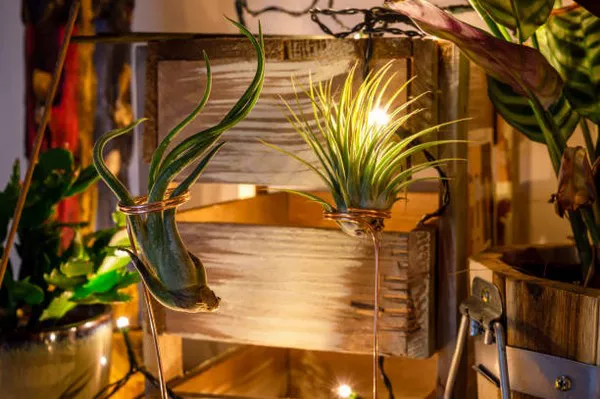Rust on plants can be a gardener’s nightmare, potentially jeopardizing the health and vibrancy of your garden. This common fungal disease can infect various types of plants, leaving behind unsightly blemishes and compromising their overall well-being. Fortunately, managing and preventing rust on your plants is not an insurmountable challenge. In this comprehensive guide, we will explore the causes of rust, its impact on plants, and, most importantly, effective strategies to eliminate and prevent this pesky problem, helping you maintain a thriving garden.
Understanding Rust on Plants
Rust Fungi: The Culprits
Rust, caused by fungi from the Pucciniales order, is characterized by the appearance of small, powdery pustules or raised spots on plant leaves, stems, and sometimes even fruit. These pustules often resemble reddish-brown or orange lesions, giving rust its name. Rust fungi are obligate parasites, meaning they can only survive by infecting and deriving nutrients from living plant tissues. They thrive in warm, humid conditions, making your garden particularly susceptible during wet seasons.
Impact on Plants
Rust fungi attack various plant species, both ornamental and edible. While rust does not usually kill the host plant outright, it can severely weaken it over time. Common signs of rust-infected plants include:
Discolored Spots: Rust typically presents as reddish-brown, orange, or yellowish lesions on leaves, stems, and other plant parts. These spots can merge and eventually cover substantial portions of the plant, affecting photosynthesis and nutrient uptake.
Reduced Vigor: Infected plants may exhibit stunted growth, reduced flowering, and decreased fruit production, leading to an overall decline in health and vitality.
Premature Leaf Drop: As rust-infected leaves become increasingly damaged, they may drop prematurely, leaving your plant vulnerable to further stressors.
Spreading to Neighboring Plants: Rust can easily spread to nearby plants, compounding the problem if not promptly addressed.
Effective Strategies to Eliminate Rust
1. Prune and Remove Affected Plant Parts
One of the most immediate actions you can take to manage rust is to prune and remove infected plant parts. Be sure to use sanitized pruning tools to prevent further contamination. Dispose of the affected plant material properly, preferably in sealed bags to prevent spore dispersal.
2. Promote Good Air Circulation
Rust thrives in humid conditions and spreads more rapidly in crowded, damp environments. To counteract this, ensure that your plants have adequate spacing and that there is good air circulation throughout your garden. This can be particularly important for susceptible plants like roses.
3. Water Wisely
Overhead watering can exacerbate rust problems by creating a humid microenvironment conducive to fungal growth. Opt for early morning watering to allow plants to dry before evening, minimizing the risk of prolonged leaf wetness.
4. Apply Fungicides
Fungicides, both chemical and organic, can be effective in managing rust. They are especially useful when applied preventatively, ideally before rust symptoms appear. Consult with your local nursery or agricultural extension service to select the most appropriate fungicide for your specific plants and region.
5. Use Neem Oil
Neem oil, derived from the neem tree, is a natural and organic remedy for rust and other fungal diseases. It works by disrupting the life cycle of rust fungi. Dilute neem oil according to package instructions and apply it to affected plants. Ensure thorough coverage, as neem oil needs to come into direct contact with the rust spores to be effective.
6. Apply Baking Soda Solution
A homemade remedy involves mixing baking soda (sodium bicarbonate) with water to create a solution that can be sprayed onto rust-affected plants. Baking soda raises the pH of the plant’s surface, making it less hospitable to rust fungi. A typical mixture is one tablespoon of baking soda per gallon of water, with a few drops of liquid soap added to help the solution adhere to plant surfaces. Apply this solution every 7-14 days.
Preventing Rust: Long-Term Strategies
1. Choose Resistant Plant Varieties
One of the most effective ways to prevent rust is to select plant varieties that are naturally resistant to rust fungi. Consult with local nurseries or gardening experts to identify rust-resistant plants suitable for your region.
2. Properly Space Plants
As mentioned earlier, proper spacing between plants promotes better air circulation, reducing the risk of humidity buildup. Follow recommended planting distances to ensure adequate spacing.
3. Practice Good Garden Hygiene
Maintain a clean garden by removing fallen leaves and plant debris promptly. These materials can harbor rust spores and serve as a source of infection for new plants.
4. Rotate Crops
If you have a vegetable garden, practice crop rotation to disrupt the life cycle of rust fungi and reduce their presence in the soil. This can be especially beneficial for crops prone to rust, such as beans and peas.
5. Mulch Appropriately
Apply mulch to garden beds to help regulate soil moisture and temperature. However, avoid over-mulching, as excessive mulch can create a humid environment that encourages rust development. Maintain a mulch layer of 2-4 inches.
Conclusion
Dealing with rust on your plants can be a challenging endeavor, but with the right strategies, it is possible to manage and prevent this fungal disease effectively. By understanding the nature of rust, taking immediate action to remove infected plant parts, and implementing long-term preventative measures, you can enjoy a lush and vibrant garden free from the unsightly effects of rust. Remember that consistency and diligence in your garden care routine are key to maintaining healthy, rust-free plants.


